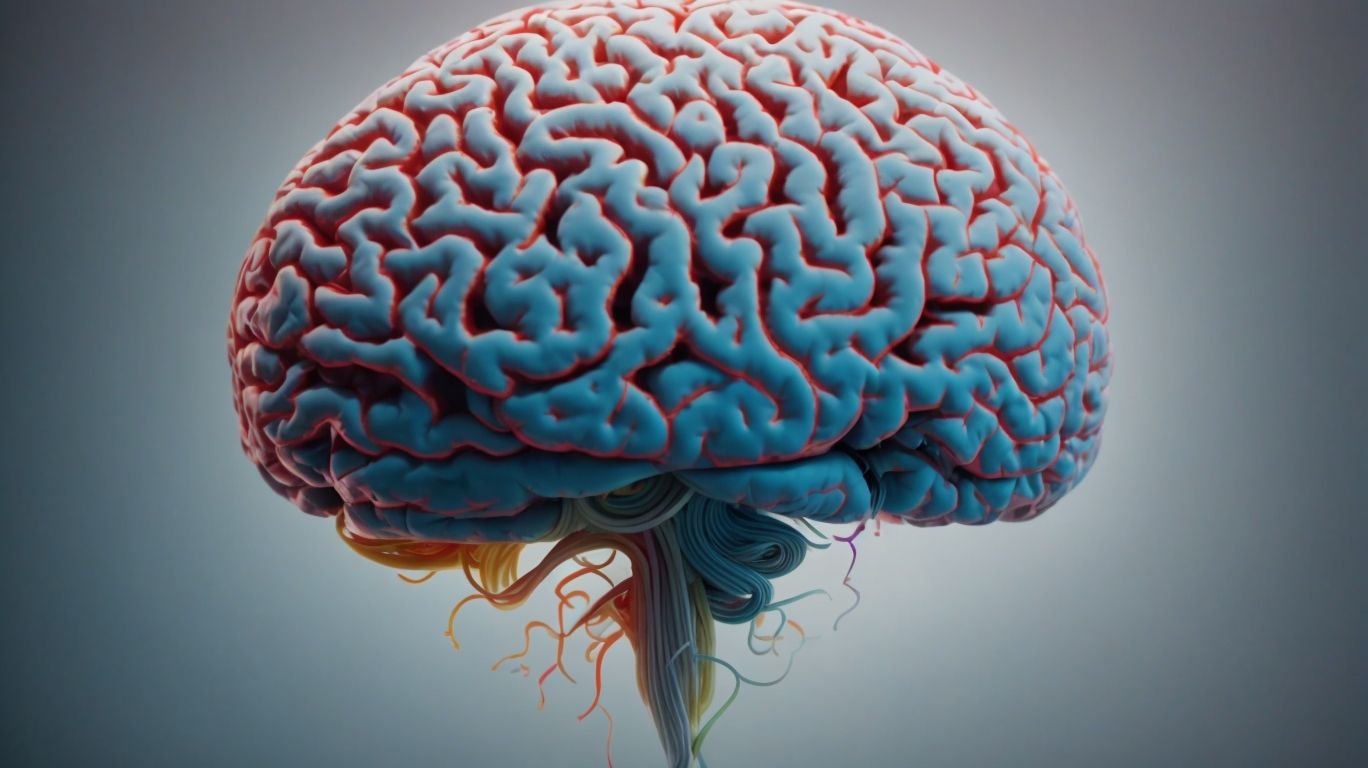Are you constantly plagued by worries and fears that seem to have no end? You may be experiencing Generalized Anxiety Disorder (GAD). In this article, we will delve into the symptoms, causes, diagnosis, and treatment options for GAD.
From excessive worrying and restlessness to genetic and environmental factors, we will explore all aspects of this common yet debilitating mental health condition. Stay tuned to learn more about how GAD can be managed and prevented.
Contents
What Is Generalized Anxiety Disorder (GAD)?
Generalized Anxiety Disorder (GAD) is a common mental health condition characterized by persistent and excessive worry and anxiety about various aspects of life.
GAD can manifest in physical symptoms such as muscle tension, fatigue, restlessness, and difficulty concentrating, significantly impacting daily functioning and overall quality of life. It can lead to insomnia, irritability, and even physical health issues if left untreated. Healthcare providers play a crucial role in diagnosing GAD by conducting thorough evaluations, which may include psychological assessments and discussions about symptoms and stressors. Treatment options for GAD include therapy, medication, or a combination of both, tailored to each individual’s specific needs to effectively manage and alleviate symptoms.
What Are the Symptoms of GAD?
The symptoms of Generalized Anxiety Disorder (GAD) manifest as persistent worry and anxiety that can affect both children and adults.
Individuals experiencing GAD may exhibit physical symptoms such as restlessness, irritability, muscle tension, and difficulty concentrating. These symptoms can vary in intensity and duration, impacting daily activities and overall quality of life. In children, GAD may present as excessive fear of failure or perfectionism, leading to avoidance of certain activities or social situations.
On the other hand, adults with GAD may struggle with feelings of impending doom, excessive worry about everyday matters, and constant nervousness. Sleep disturbances, such as difficulty falling or staying asleep, are also common in individuals with GAD, further exacerbating the emotional and physical toll of the disorder.
Excessive Worrying
Excessive worrying is a hallmark symptom of Generalized Anxiety Disorder (GAD), leading to persistent anxiety and distress that may require mental health treatment.
Individuals with GAD often experience a constant state of apprehension and fear that can interfere with daily activities and quality of life. The impact of excessive worrying goes beyond just feeling anxious; it can lead to physical symptoms such as headaches, muscle tension, and stomach issues. The chronic stress caused by this worrying can take a toll on the body’s immune system and overall well-being. The negative effects of untreated GAD can further exacerbate other mental health conditions like depression or substance abuse.
Restlessness and Irritability
Restlessness and irritability are common symptoms experienced by individuals with Generalized Anxiety Disorder (GAD), often requiring therapy and intervention to manage effectively.
Restlessness in GAD patients is characterized by an inability to sit still, a constant urge to move, and difficulty concentrating due to inner turmoil.
Irritability, on the other hand, manifests as a short fuse, heightened sensitivity to stimuli, and a tendency to snap easily, straining personal and professional relationships.
These symptoms significantly disrupt daily life, affecting work performance, social interactions, and overall well-being.
Therapy plays a crucial role in addressing these manifestations, providing coping strategies, behavioral interventions, and emotional support to help individuals manage their symptoms, improve quality of life, and enhance resilience.”
Difficulty Concentrating
Difficulty concentrating is a prevalent symptom associated with Generalized Anxiety Disorder (GAD), affecting cognitive functions and often considered during the diagnostic process.
Individuals experiencing GAD often struggle to maintain focus due to the persistent worries and excessive anxiety that characterize the condition. This difficulty in concentrating can impact various aspects of daily life, such as work performance, academic achievements, and even personal relationships.
Challenges in concentration are a key feature considered in the diagnostic criteria for GAD, as they play a significant role in distinguishing the disorder from other mental health conditions. These concentration difficulties can be disruptive and lead to heightened levels of stress and frustration for individuals living with GAD.
Muscle Tension
Muscle tension is a physical symptom commonly observed in individuals with Generalized Anxiety Disorder (GAD), often addressed through therapeutic interventions to reduce stress and promote relaxation.
When left untreated, excessive muscle tension in GAD patients can lead to a myriad of physical health issues, including headaches, fatigue, and disrupted sleep patterns. The constant strain on the body can also contribute to chronic pain conditions and exacerbate existing medical conditions.
Physical therapy techniques, such as progressive muscle relaxation and gentle stretching exercises, are frequently employed to alleviate muscle tension in individuals with GAD. These methods not only target the physical symptoms but also help in calming the mind and reducing overall anxiety levels.
Sleep Problems
Sleep problems are prevalent among individuals with Generalized Anxiety Disorder (GAD), necessitating lifestyle changes and interventions to improve sleep quality and overall well-being.
Individuals with GAD commonly experience difficulties falling asleep, staying asleep, or waking up too early, often leading to chronic fatigue and increased anxiety levels. These sleep disturbances can significantly impact daily functioning and mental health, exacerbating the existing symptoms of GAD.
Implementing healthy sleep habits, such as maintaining a consistent sleep schedule, creating a relaxing bedtime routine, and avoiding stimulants before sleep, can play a pivotal role in managing sleep problems. Relaxation techniques like deep breathing exercises or mindfulness meditation can help calm an anxious mind, fostering better sleep quality.
What Causes GAD?
Generalized Anxiety Disorder (GAD) can be caused by a combination of genetic predispositions, alterations in brain chemistry, environmental influences, and traumatic life events.
Genetic predispositions play a significant role in the development of GAD, as individuals with a family history of anxiety disorders are more likely to experience it themselves. Neurochemical imbalances, such as disruptions in serotonin and noradrenaline levels, also contribute to the manifestation of GAD symptoms.
Environmental factors like stress, upbringing, and societal pressures can exacerbate anxiety levels, leading to the onset of GAD. Traumatic life events, such as abuse, accidents, or sudden loss, can trigger the disorder, highlighting the complex interplay of various factors in GAD etiology.
Genetics
Genetic factors play a significant role in the development of Generalized Anxiety Disorder (GAD), influencing individual susceptibility and contributing to diagnostic considerations.
Studies have shown that individuals with a family history of GAD are more likely to develop the condition themselves, suggesting a hereditary component. Genetic variations in certain genes, such as those involved in the regulation of neurotransmitters like serotonin and dopamine, have been linked to an increased risk of GAD. These genetic predispositions can interact with environmental factors, such as childhood experiences or stressful life events, further influencing the manifestation of anxiety disorders.
Brain Chemistry
Alterations in brain chemistry, particularly involving neurotransmitters like dopamine and serotonin, are linked to the development and regulation of Generalized Anxiety Disorder (GAD) and are areas of ongoing research.
Research indicates that imbalances in these neurotransmitters can lead to heightened anxiety responses, affecting mood, cognition, and overall mental well-being. For instance, low levels of serotonin have been associated with increased feelings of anxiety and stress. On the other hand, dopamine dysregulation can influence reward processing and motivation, contributing to the manifestation of anxiety disorders. Understanding the intricate interplay of neurotransmitter function in GAD pathophysiology is essential for developing targeted treatments that can correct these imbalances.
Environmental Factors
Environmental factors such as stress, upbringing, and social influences contribute to the development of Generalized Anxiety Disorder (GAD) and are pivotal in preventive strategies.
Being constantly exposed to high-stress environments can significantly heighten the risk of developing GAD, as the body’s physiological responses to stress can become dysregulated. Individuals with a history of adverse childhood experiences may also be more susceptible to GAD due to the lasting impact of early life trauma.
Preventative measures aimed at addressing environmental influences on GAD include fostering supportive social networks, implementing stress-reducing techniques such as mindfulness and relaxation exercises, and promoting a healthy work-life balance. By addressing these factors proactively, individuals can mitigate the risk of developing GAD and improve overall mental wellness.
Traumatic Life Events
Traumatic life events, such as accidents, loss, or abuse, can trigger or exacerbate Generalized Anxiety Disorder (GAD) symptoms, often requiring therapeutic interventions for coping and recovery.
When individuals experience trauma, their sense of safety and security is profoundly shattered, leading to heightened levels of anxiety and worry. These individuals may struggle with persistent feelings of fear and vulnerability, impacting their overall well-being. Therapeutic approaches, such as cognitive-behavioral therapy (CBT) and Eye Movement Desensitization and Reprocessing (EMDR), have shown effectiveness in treating GAD symptoms stemming from trauma.
Addressing past traumatic events in therapy is crucial for individuals with GAD, as it allows them to process and make sense of their experiences, fostering healing and resilience. By exploring the root causes of their anxiety and developing coping mechanisms, individuals can gradually regain a sense of control and reduce the impact of trauma on their mental health.
How Is GAD Diagnosed?
Diagnosing Generalized Anxiety Disorder (GAD) involves evaluating risk factors, symptoms, and physical manifestations to confirm the presence of the condition.
When detecting GAD, healthcare providers typically begin with a comprehensive assessment, looking at various aspects such as a patient’s medical history, family history of mental health conditions, and any recent traumatic events that may have triggered anxiety.
Assessing symptoms involves analyzing persistent feelings of worry, restlessness, and irritability, as well as physical symptoms like muscle tension, fatigue, and difficulty concentrating. These symptoms are crucial in distinguishing GAD from other anxiety disorders.
Physical symptoms play a vital role in confirming a GAD diagnosis, as they can manifest as cardiovascular issues, gastrointestinal problems, or other ailments triggered by persistent anxiety levels.
How Is GAD Treated?
The treatment of Generalized Anxiety Disorder (GAD) typically involves a combination of therapy, medication, and lifestyle modifications to address symptoms and improve overall well-being.
Therapy, such as Cognitive Behavioral Therapy (CBT) and mindfulness-based approaches, plays a crucial role in managing GAD symptoms by helping individuals identify and challenge negative thought patterns and develop coping strategies.
Medications commonly prescribed for GAD include Selective Serotonin Reuptake Inhibitors (SSRIs) like escitalopram and benzodiazepines such as alprazolam, which can help reduce anxiety levels and promote relaxation.
Along with therapy and medication, incorporating lifestyle changes like regular exercise, maintaining a healthy diet, practicing relaxation techniques such as deep breathing or yoga, and ensuring an adequate amount of sleep can further support individuals in managing their anxiety symptoms.
Therapy
Therapy, including cognitive-behavioral therapy (CBT) and support groups, is a cornerstone of Generalized Anxiety Disorder (GAD) treatment, providing tools for managing anxiety and enhancing coping skills.
Cognitive-behavioral therapy (CBT) focuses on changing thought patterns and behaviors that contribute to anxiety, helping individuals recognize and challenge irrational fears. Support groups offer a valuable space for individuals to share experiences, gain insights, and receive encouragement from others facing similar struggles. Other psychotherapeutic approaches like mindfulness-based therapies and relaxation techniques play significant roles in relieving anxiety symptoms and improving overall well-being.
Medications
Medications such as SSRIs, SNRIs, and benzodiazepines are commonly prescribed for Generalized Anxiety Disorder (GAD) to address symptoms, although they may be associated with side effects that require monitoring.
Antidepressants like Selective Serotonin Reuptake Inhibitors (SSRIs) are often the first-line pharmacological treatment for GAD due to their proven efficacy in managing anxiety symptoms. These medications work by increasing the levels of serotonin in the brain, which helps regulate mood and reduce feelings of anxiety. It’s important to note that individuals may experience side effects such as nausea, insomnia, or sexual dysfunction when taking SSRIs, making careful monitoring essential.
Lifestyle Changes
Implementing lifestyle changes such as regular exercise, relaxation methods, and dietary adjustments can complement therapy and medication in managing Generalized Anxiety Disorder (GAD) symptoms.
Engaging in physical activity not only boosts serotonin levels but also reduces stress hormones like cortisol, playing a crucial role in alleviating anxiety. Alongside exercise, incorporating relaxation techniques such as mindfulness meditation or deep breathing exercises can help in calming the mind and improving overall mental well-being. Making conscious dietary choices, like reducing caffeine intake and consuming foods rich in omega-3 fatty acids, can further support mental health stability in individuals with GAD.
What Are the Complications of GAD?
Generalized Anxiety Disorder (GAD) can lead to complications such as exacerbating physical health conditions, increasing the risk of mental illnesses, and impacting overall well-being.
Living with GAD can manifest in a variety of ways, affecting not only the body but also mental health. The persistent worry and fear characteristic of GAD can trigger or worsen existing physical conditions, like heart problems and gastrointestinal issues due to prolonged stress. The constant state of anxiety can impair cognitive functions, leading to difficulties in concentration and decision-making. This cognitive overload, coupled with the emotional toll of GAD, can pave the way for the development of other mental health disorders, complicating the individual’s overall well-being.
Can GAD Be Prevented?
While Generalized Anxiety Disorder (GAD) cannot be entirely prevented, certain strategies such as lifestyle modifications, stress management, and early intervention can help reduce the risk of developing the condition.
Studies suggest that incorporating regular physical exercise into one’s routine can significantly reduce anxiety levels and promote overall well-being. Engaging in activities like yoga, meditation, or mindfulness practices can also be beneficial in managing stress and anxiety. Maintaining a balanced diet rich in nutrients such as omega-3 fatty acids, magnesium, and antioxidants may further support mental health.
Fostering strong social connections, seeking therapy or counseling when needed, and practicing relaxation techniques can play a vital role in preventing the escalation of anxiety symptoms. Early detection and intervention are key in addressing any signs of anxiety disorders before they exacerbate into more severe conditions.
Frequently Asked Questions
What is Generalized Anxiety Disorder (GAD)?
Generalized Anxiety Disorder is a mental health condition characterized by persistent and excessive worrying or anxiety about everyday events or activities. It can interfere with daily life and cause significant distress.
What are the symptoms of GAD?
The symptoms of GAD may include excessive worry, restlessness, difficulty concentrating, muscle tension, fatigue, irritability, and sleep disturbances. Some individuals may also experience physical symptoms like stomachaches, headaches, or nausea.
What causes Generalized Anxiety Disorder?
The exact cause of GAD is not fully understood, but it is believed to be a combination of genetic, environmental, and psychological factors. Individuals with a family history of anxiety disorders or traumatic life events may be at a higher risk for developing GAD.
How is GAD diagnosed?
A mental health professional, such as a psychiatrist or psychologist, can diagnose GAD through a comprehensive evaluation of symptoms and medical history. The criteria outlined in the DSM-5, a manual used to diagnose mental health disorders, is also used to diagnose GAD.
What are some treatment options for GAD?
Treatment for GAD may include therapy, medication, or a combination of both. Cognitive Behavioral Therapy (CBT) is often used to help individuals manage and challenge their anxious thoughts and behaviors. Medications such as antidepressants or anti-anxiety medication may also be prescribed to help manage symptoms.
Can GAD be cured?
While there is no cure for GAD, it can be effectively managed through therapy and medication. Many individuals with GAD are able to lead fulfilling and productive lives with proper treatment and support. It is important to seek help from a mental health professional if you believe you may be experiencing symptoms of GAD.





